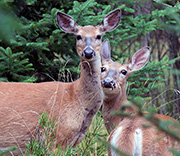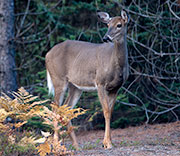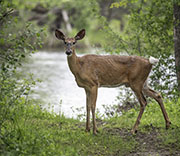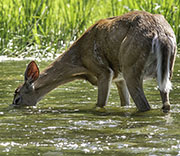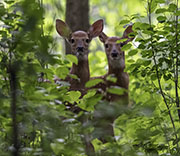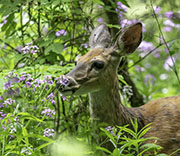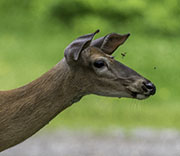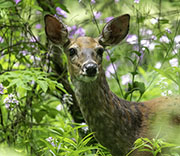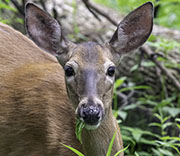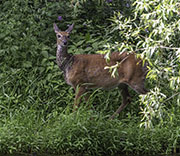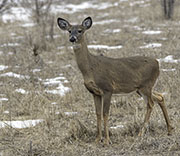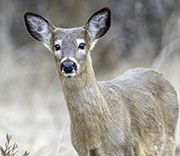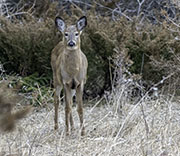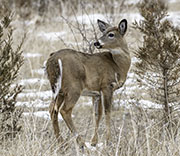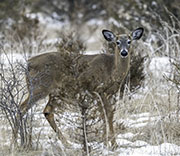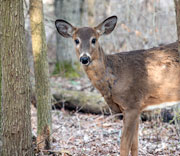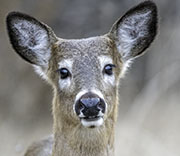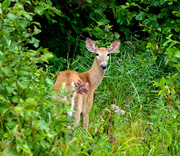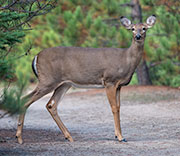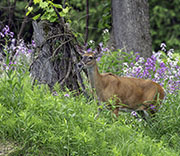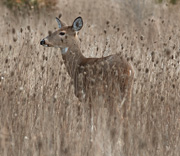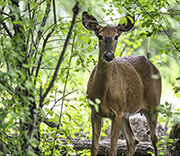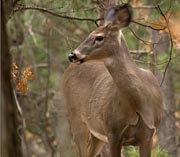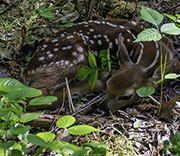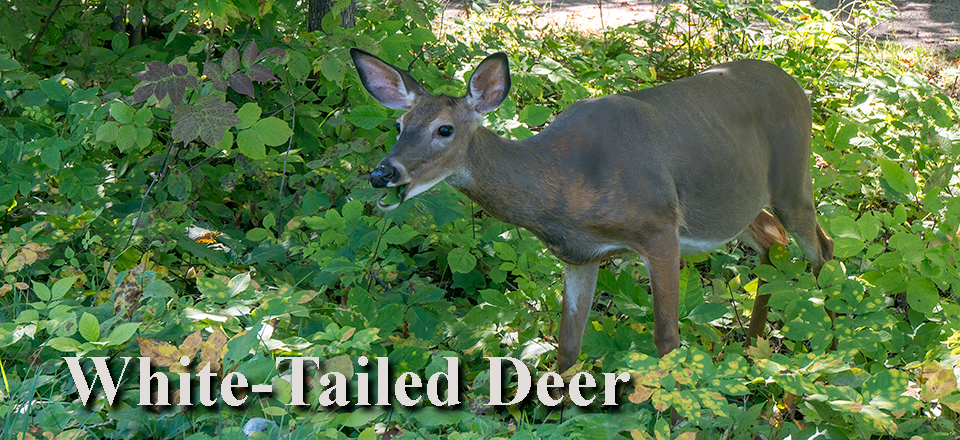
White-tailed Deer (Odocoileus virginianus)
White-tailed Deer are a joy to observe. They are graceful and beautiful. They run and bounce, kicking into the air like they barely touch the ground, with their white flag-like tails waving. They can be very tame in the parks making it easy to observe them in their natural habitat.
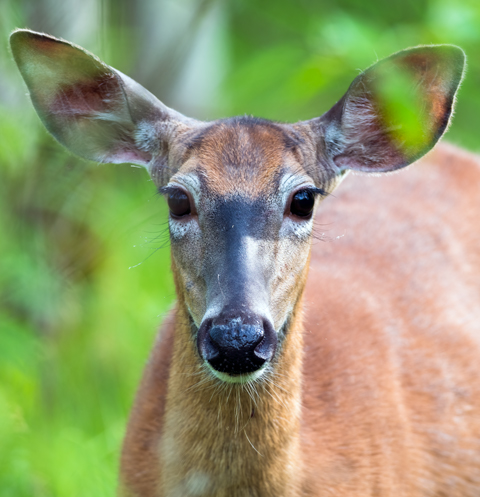 Deer are more often seen in the early mornings and evenings. They graze in clearings and forest edges in the early mornings and evenings without fully digesting their food. This is likely because they don’t want to expose themselves to danger for extended periods. Later, they retreat to the safety of the deeper woods and, like cows, bring up their cud and chew before further digesting. We have come across them in the woods, alert, yet resting quietly, as the chew away.
Deer are more often seen in the early mornings and evenings. They graze in clearings and forest edges in the early mornings and evenings without fully digesting their food. This is likely because they don’t want to expose themselves to danger for extended periods. Later, they retreat to the safety of the deeper woods and, like cows, bring up their cud and chew before further digesting. We have come across them in the woods, alert, yet resting quietly, as the chew away.
White-tailed deer have good eyesight and hearing, but depend mainly on their sense of smell to detect danger. Their most outstanding characteristic is their large white tail which is used to signal other deer when danger is present.
The White-tailed Deer usually begins its mating season, commonly referred to as the rut, in October. During this time, we have seen bucks looking like they are on a mission with a one-track mind. All this behaviour is because the doe is only in heat for a very short time. If a buck wants to pass on his genes, he has to be at the right place, at the right time and be prepared to earn his right over other suitors. Once a buck mates with a doe, he will be off on search of the next doe ready to breed.
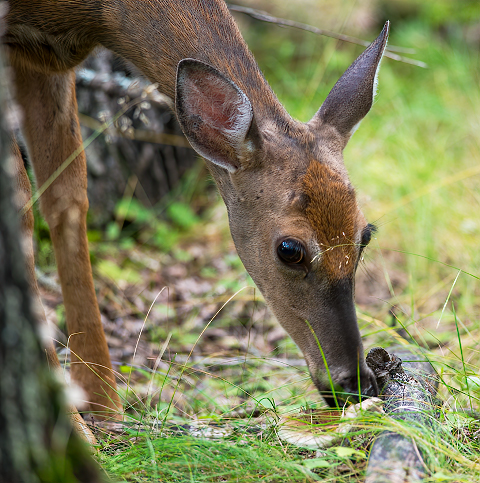 The white-tailed deer’s spotted, wobbly legged fawns are usually born late May or early June. The newborn fawn can get to its feet within minutes, and very soon starts drinking from it’s mother.
The white-tailed deer’s spotted, wobbly legged fawns are usually born late May or early June. The newborn fawn can get to its feet within minutes, and very soon starts drinking from it’s mother.
The mother leaves her fawn well-hidden for hours at a time while she feeds. The fawns lay motionless, curled up in a ball. They are defenceless, so they have to depend on their natural camouflage of their spotted coat and near scentless condition to conceal themselves. If you do come across one, rest assure that it is not abandoned and the fawn should not be touched. Human scent and your presence should the mother return while you are there, could spook her and cause the doe to desert her fawn.
Over the last century, the White-tailed Deer population has been booming. Us humans have made it very easy for them in a number of ways. We killed off most of their predators (wolves, cougars, grizzlies, etc.). We cut down most of mature trees, providing deer with their favourite habitat of new growth forest for easy access, cover and fresh food. Humans are the main reason for deer mortality through hunting, vehicle collisions, free-roaming dogs and culling.
If you look up the life expectancy of White-tailed Deer on the web, you will get a very wide range. University of Wisconsin steady says the average age of a male deer is 2.9 years. However, in the safe environment of captivity, they can live over 20 years. Compared to human years, most male deer die before their 12th birthday.
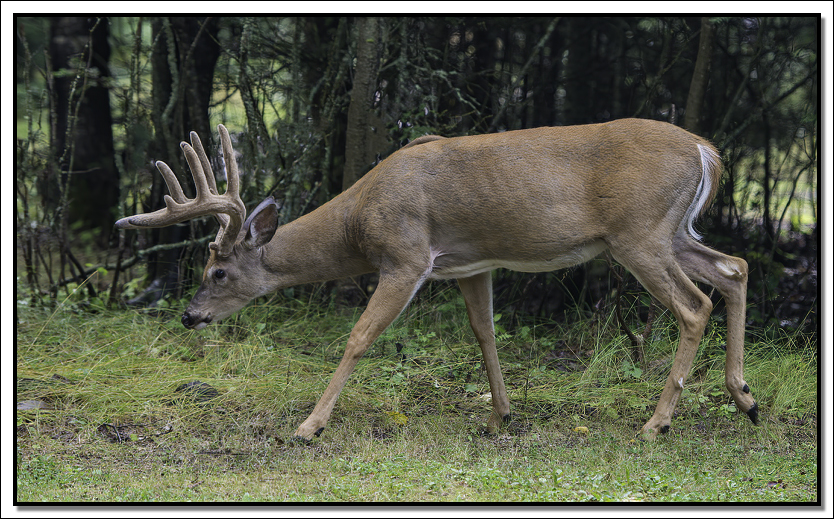
Deer grow and shed antlers every year, requiring large amounts of nutrients and energy. The size and formation of antlers vary widely . Antler growth depends on an individual deer's age, genetics and access to quality nutrition.
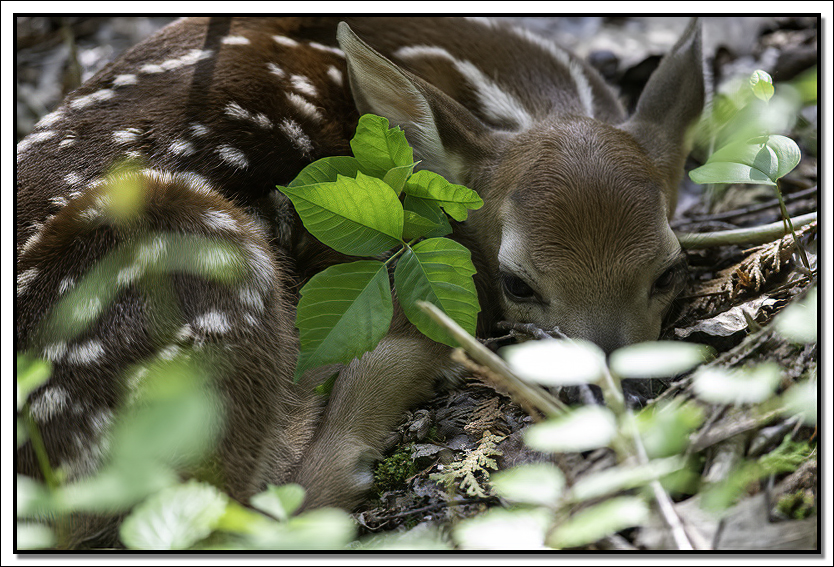
A recently born young fawn is waiting in the woods while its mother is out feeding. The fawn stayed motionless among the poison ivy.
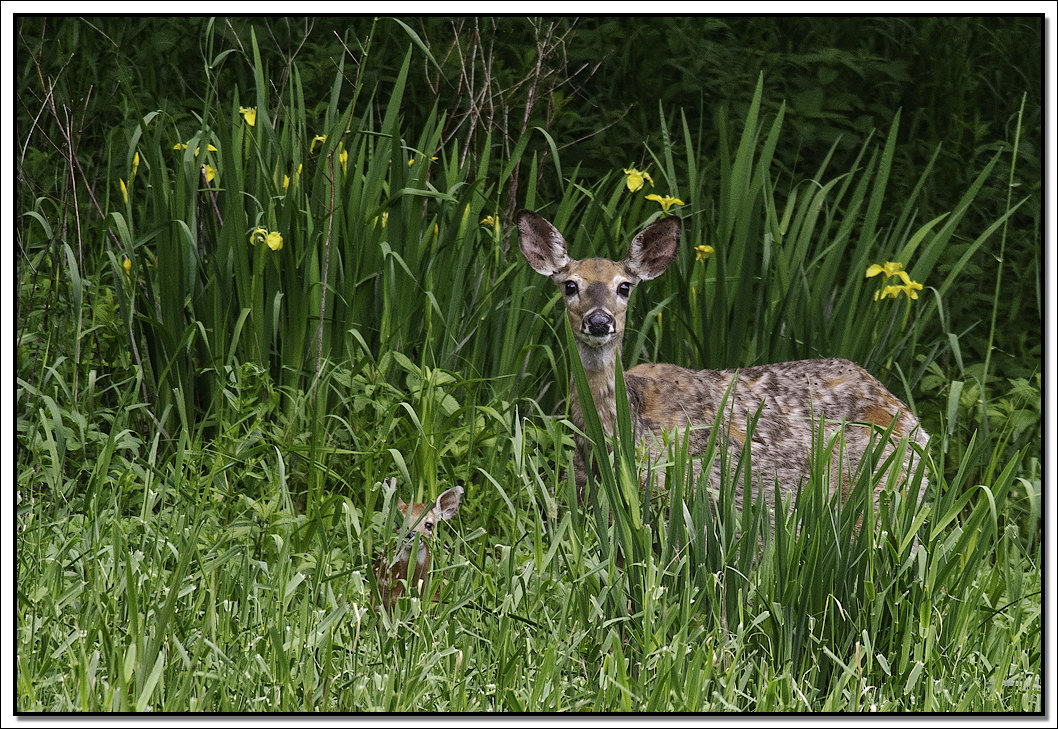
White-tailed doe is very protective of her little fawn. Fawns are typically weaned at 6 months, but usually stay with the mother until mom gives birth to another fawn the following year.
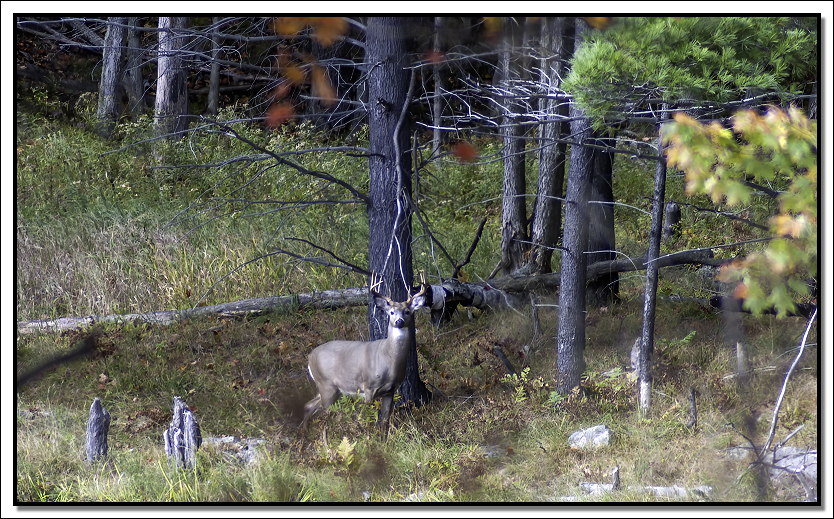
White-tailed Deer prefer open woodland but their habitat includes areas along streams and rivers, mixed woodlands, farms, forests, and burned shrub fields. Open areas are used only when thick shrubs or forest are nearby.
